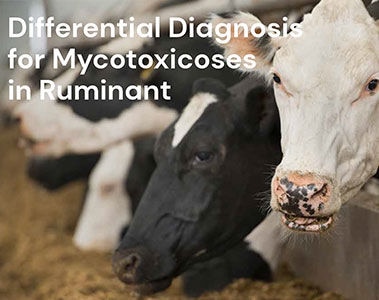Effects of mycotoxins on animals are diverse and range from carcinogenicity, hepatoxicity and neurotoxicity to impaired reproduction, digestive disorders, immunomodulation and decreased performance. Clinical signs can be seen at high levels of mycotoxin contamination but more frequently we observe subclinical effects. Already moderate levels of mycotoxins, especially during chronic exposure, can negatively affect the animals. Mycotoxins influence the immune system, the integrity of the gut barrier and act as predisposing factors for disease. Use the filters to find out more on the negative impact of mycotoxins in the different species.
See results of the six well known mycotoxins in finished feed for poultry, swine and aquaculture as well as in TMR for ruminants in the different regions of the word.













